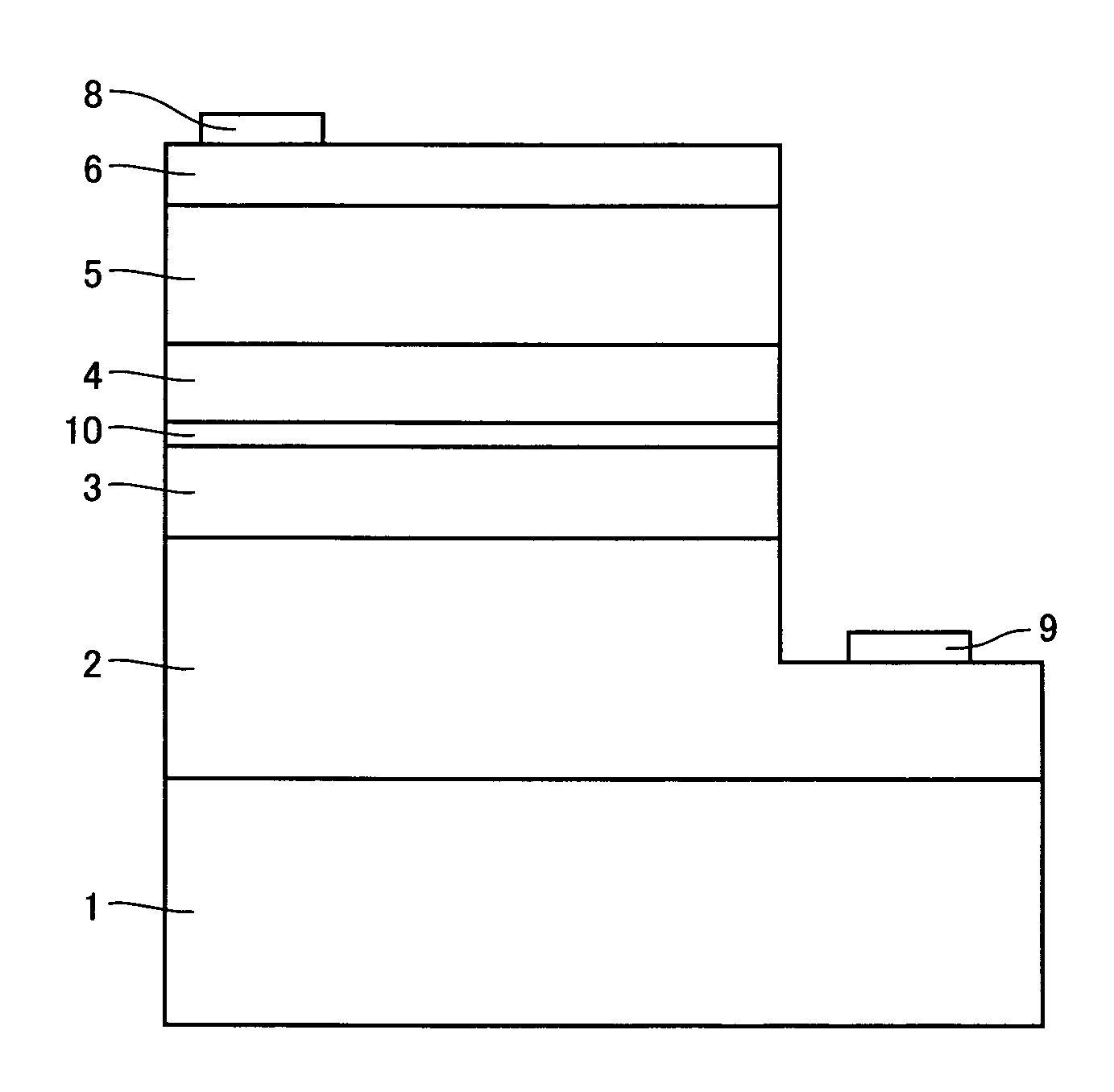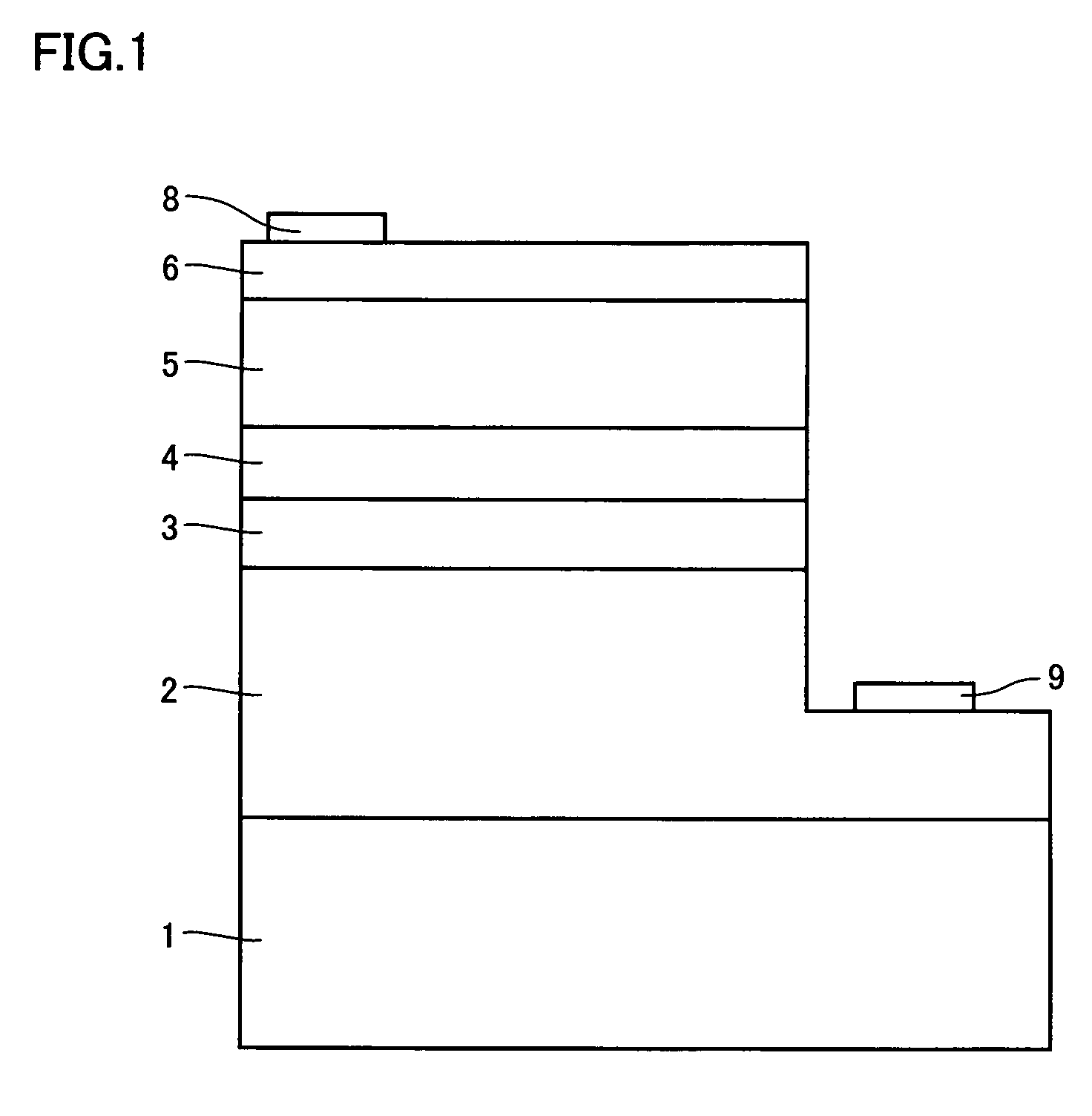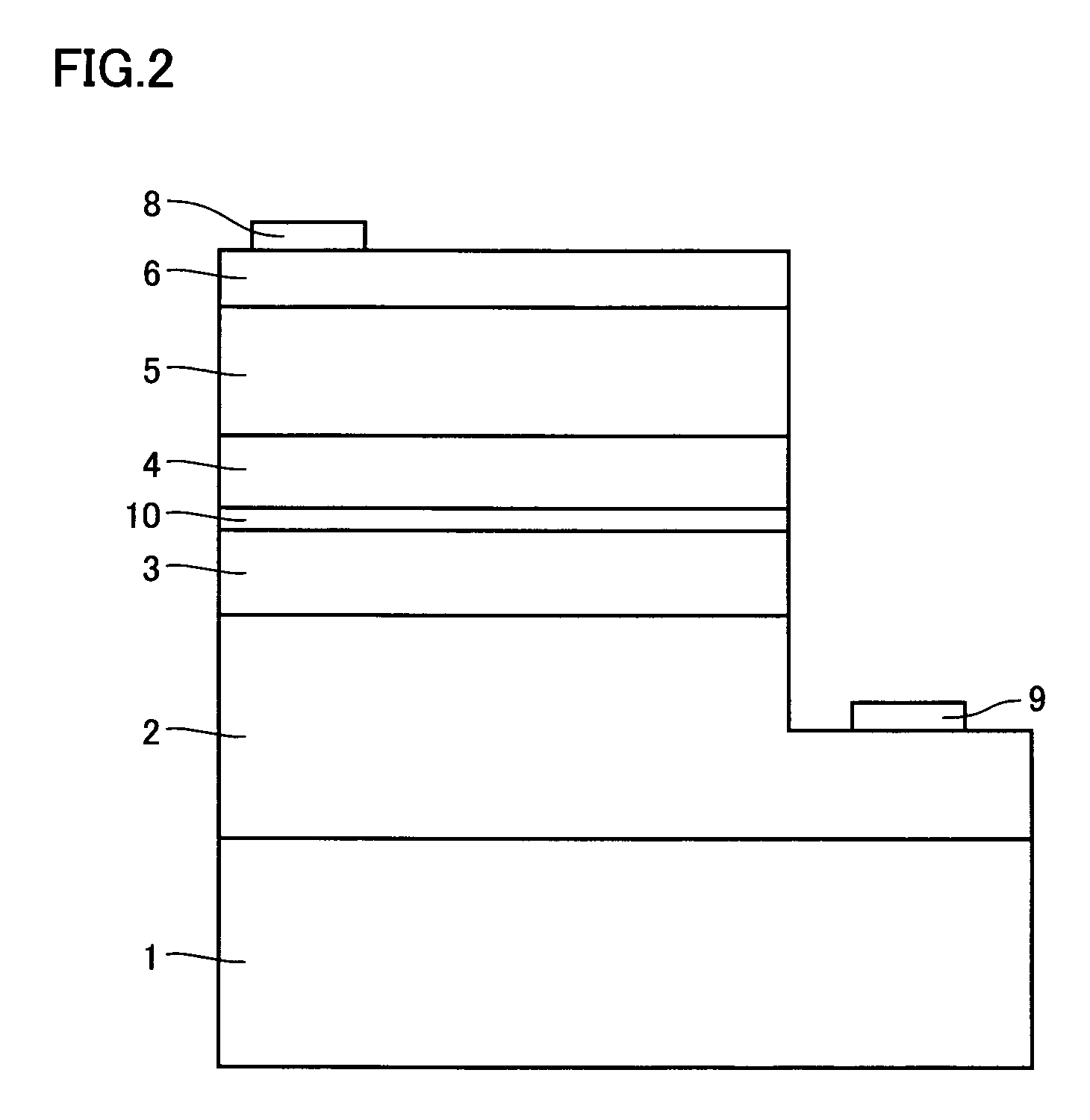Semiconductor light emitting device and nitride semiconductor light emitting device
a light emitting device and semiconductor technology, applied in the field of nitride semiconductor light emitting devices, can solve the problems of difficult to convert the well layer into a p-type, large activation energy of a p-type impurity, etc., to achieve high light emission efficiency, suppress the deterioration of the crystallinity of the active layer, and high current density
- Summary
- Abstract
- Description
- Claims
- Application Information
AI Technical Summary
Benefits of technology
Problems solved by technology
Method used
Image
Examples
example 1
[0073]In Example 1, the nitride semiconductor light emitting diode having a configuration shown in the schematic cross-sectional view of FIG. 4 was manufactured.
[0074]First, a sapphire substrate 101 was set in a reaction furnace of a MOCVD machine. Then, the temperature of sapphire substrate 101 was raised to 1050° C. while hydrogen flowed in the reaction furnace, to perform cleaning of the surface (C face) of sapphire substrate 101.
[0075]Next, the temperature of sapphire substrate 101 was lowered to 510° C. and hydrogen as carrier gas and ammonia and TMG (trimethyl gallium) as raw material gas flowed in the reaction furnace, to grow a GaN buffer layer 102 on the surface of sapphire substrate 101 (C face) to a thickness of about 20 nm with a MOCVD method.
[0076]The temperature of sapphire substrate 101 was raised to 1050° C. and hydrogen as carrier gas, ammonia and TMG as raw material gas, and silane as impurity gas flowed in the reaction furnace, to grow an n-type GaN under-layer 10...
example 2
[0087]With the same conditions and the same method as in Example 1, n-type GaN contact layer 104 was grown.
[0088]Next, the temperature of sapphire substrate 101 was kept to 1050° C. and hydrogen as carrier gas, ammonia, TMG, and TMA (trimethyl aluminum) as raw material gas, and CP2Mg as impurity gas flowed in the reaction furnace, to grow an p-type Al0.25Ga0.75N layer doped with Mg at a concentration of 1×1019 / cm3 on n-type GaN contact layer 104 to a thickness of 20 nm with a MOCVD method.
[0089]Then, the temperature of sapphire substrate 101 was kept to 1050° C. and hydrogen as carrier gas, ammonia and TMG as raw material gas, and CP2Mg as impurity gas flowed in the reaction furnace, to grow a p-type GaN layer doped with Mg at a concentration of 1×1019 / cm3 on the p-type Al0.25Ga0.75N layer to a thickness of 10 nm with a MOCVD method.
[0090]After that, a nitride semiconductor light emitting diode device in Example 2 was manufactured by performing steps after the growth of active layer...
example 3
[0094]With the same conditions and the same method as in Example 1, n-type GaN contact layer 104 was grown.
[0095]Next, the temperature of sapphire substrate 101 was kept to 1050° C. and hydrogen as carrier gas, ammonia, TMG, and TMA as raw material gas, and CP2Mg as impurity gas flowed in the reaction furnace, to grow a p-type Al0.25Ga0.75N layer on n-type GaN contact layer 104 to a thickness of 20 nm with a MOCVD method.
[0096]Then, the temperature of sapphire substrate 101 was kept to 1050° C. and hydrogen as carrier gas, and ammonia and TMG as raw material gas flowed in the reaction furnace, to grow an undoped GaN layer on the p-type Al0.25Ga0.75N layer to a thickness of 20 nm with a MOCVD method.
[0097]After that, the nitride semiconductor light emitting diode device in Example 3 was manufactured by performing steps after the growth of active layer 106 with the same conditions and the same method as in Example 1.
[0098]In the relationship between the current density and the light e...
PUM
 Login to View More
Login to View More Abstract
Description
Claims
Application Information
 Login to View More
Login to View More - R&D
- Intellectual Property
- Life Sciences
- Materials
- Tech Scout
- Unparalleled Data Quality
- Higher Quality Content
- 60% Fewer Hallucinations
Browse by: Latest US Patents, China's latest patents, Technical Efficacy Thesaurus, Application Domain, Technology Topic, Popular Technical Reports.
© 2025 PatSnap. All rights reserved.Legal|Privacy policy|Modern Slavery Act Transparency Statement|Sitemap|About US| Contact US: help@patsnap.com



